Welcome to Yamunotri, a sacred destination in Uttarakhand, India, where you can find the divine abode. Yamunotri is revered as one of the Char Dham pilgrimage sites and is the source of the holy Yamuna River. It holds a significant place in Hindu mythology. It also attracts tourists and pilgrims from all over the world. Yamunotri is a captivating destination that provides a one-of-a-kind spiritual and cultural experience due to its mythological and historical significance, stunning natural beauty, and extensive cultural heritage. Take a journey with us as we learn about Yamunotri’s mythology, history, location, attractions, and pilgrimage experience. Prepare yourself for an exhilarating journey to this sacred land where spirituality meets natural beauty.
Mythological and Historical Significance
Yamunotri’s status as a revered pilgrimage site is enhanced by its rich mythology and history. The blog post should focus on the following important points:
Relevance in Mythology: Yamunotri is believed to have been the birthplace of the holy Yamuna River, according to Hindu mythology. It is believed that Lord Krishna granted Yamuna, the daughter of the sun god Surya, the ability to flow like a river on Earth. Legend has it that Yamuna is revered as a goddess who can purify sins and bestow blessings on her devotees and is thought to be the sister of Yama, the god of death. The location where the Yamuna River got its start at Yamunotri is thus linked to a number of myths, legends, and practices that have been passed down through the generations.
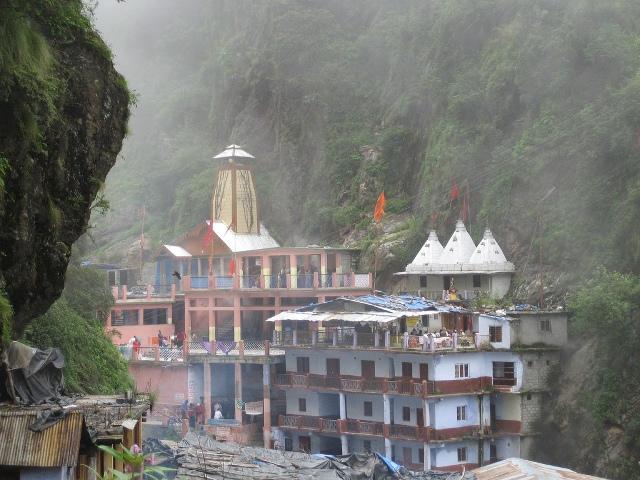
Authentic Importance: Yamunotri is mentioned in ancient Hindu scriptures and historical records, giving it historical significance. It is accepted that Yamunotri has been a sacrosanct site of journey for a really long time, with references to it tracked down in old texts like the Skanda Purana, Mahabharata, and different other Hindu sacred texts. According to historical records, Yamunotri was also a significant place of worship under the Gurkha king Amar Singh Thapa’s rule in the 19th century. Since ancient times, devotees, sages, and seers have passed through the vicinity of Yamunotri, making it a place of profound spiritual reverence.
Ceremonies and Customs: The pilgrimage site of Yamunotri is renowned for its distinctive rituals and customs. Taking a sacrificial bath in the icy-cold waters of the Yamuna River, which are said to purify the soul and wash away sins, is the primary pilgrimage activity. Pioneers additionally offer supplications at the Yamunotri Sanctuary, which is committed to the goddess Yamuna and accepted to be over 700 years of age. During the pilgrimage season, other rituals include performing pujas (worship ceremonies), tying ribbons or strings around trees for blessings, and participating in various religious ceremonies.
Cultural Relevance: Yamunotri is more than just a place of religious and cultural significance. The pilgrimage to Yamunotri provides a glimpse into India’s extensive cultural heritage, including its religious beliefs and practices. Explorers frequently dress in conventional clothing, convey contributions, and serenade psalms as a feature of their journey insight. The nearby culture and way of life of individuals living nearby Yamunotri additionally give bits of knowledge into the remarkable social texture of the area, with their traditions, customs, and lifestyle interlaced with the otherworldly meaning of Yamunotri.
Location and Access
It’s important to talk about Yamunotri’s location and accessibility in your blog post. Include the following important points:
Geographical Location: Yamunotri is in India’s Uttarkashi district, which is in the northern state of Uttarakhand. It is in the Garhwal Himalayas, at an elevation of approximately 3,293 meters (10,804 feet), surrounded by breathtaking views of snow-capped peaks, thick forests, and rushing rivers. Yamunotri is a popular pilgrimage destination because of its unspoiled beauty.
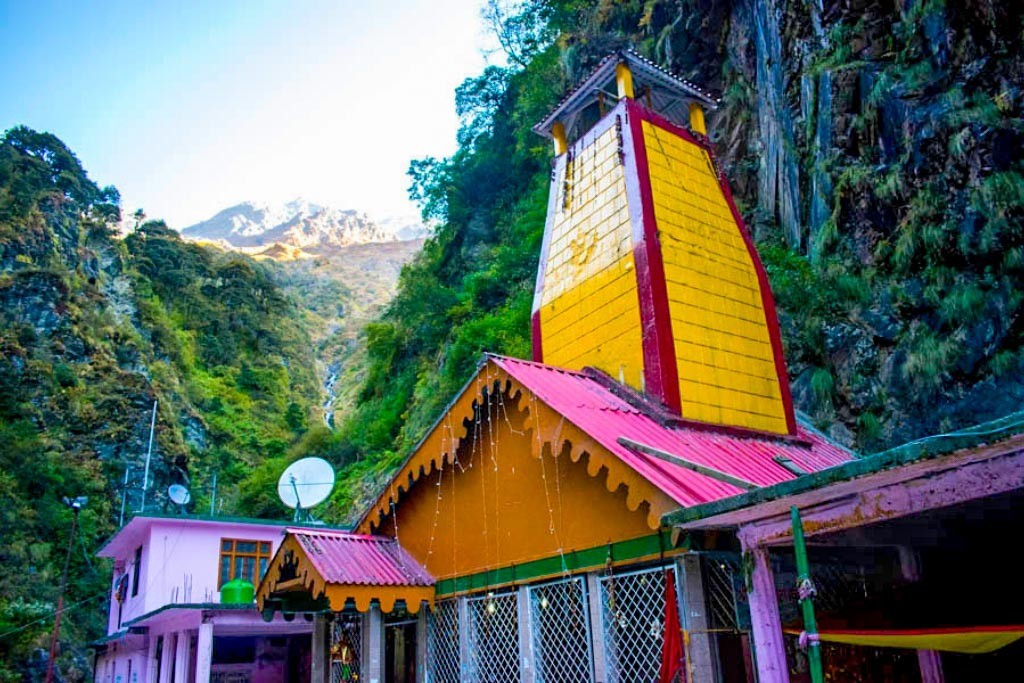
How to Get to Yamunotri: Yamunotri can be reached by road or by trekking. Uttarkashi, the major town closest, is well-connected by road to other major cities in Uttarakhand and states nearby. Pilgrims must trek approximately 6 kilometers (3.7 miles) to reach Yamunotri from Uttarkashi. Pilgrims will have a thrilling time on the trek, which takes them through picturesque landscapes like thick forests, rushing streams, and rocky terrain. Those who are unable to trek can also rent horses and palanquins.
Access in Season: Yamunotri is only open to pilgrims during a specific pilgrimage season, which, depending on the weather, typically begins in April or May and lasts until October or November. During the winter, the area gets a lot of snow, making it hard to get to and dangerous for pilgrims. Before setting out on your journey, it is essential to schedule your visit to Yamunotri during the pilgrimage season and assess the current weather and road conditions.
Accommodation and Facilities: At Yamunotri, there are only a few options for lodging, including ashrams and guesthouses run by the government and private companies. Pilgrims can get food, a place to sleep, and medical services from these accommodations. However, because of Yamunotri’s remote location, facilities may be basic and limited, so it’s best to be prepared for the pilgrimage’s rough terrain.
Yamunotri Temple
The Yamunotri Sanctuary is a critical strict site situated at Yamunotri, which is the wellspring of the Yamuna Waterway and one of the Burn Dham journey objections in Uttarakhand, India. Include the following essential points in your blog post about the Yamunotri Temple:
Architecture and History: The Yamunotri Temple has significant historical and architectural significance and is thought to be more than 700 years old. It is constructed in the traditional Himalayan style, with stone walls decorated with intricate carvings and a timber-conical roof. Hindus hold the temple, which is dedicated to the goddess Yamuna, in high regard as a place of worship. Surya Kund, a sacred hot water spring believed to have medicinal properties, is part of the temple complex.
Relevance to religion: The Yamunotri Sanctuary is a significant journey site for Hindus, who accept that a visit to Yamunotri can scrub sins, present gifts, and bring favorable luck. Near the temple, pilgrims perform a highly auspicious ritual of bathing in the icy-cold Yamuna River waters. They also pray, hold pujas, or ceremonies of worship, and pray to the goddess Yamuna for health, wealth, and well-being. During the pilgrimage season, the temple is a significant place of faith and devotion for thousands of pilgrims.
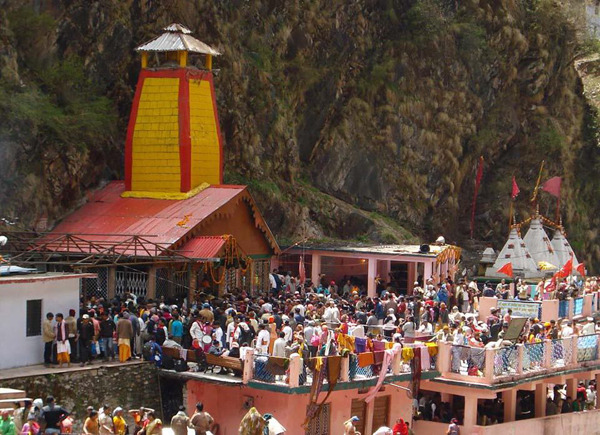
Myths and Legends: The significance of the Yamunotri Temple is enhanced by the fact that it is linked to numerous mythological legends. Yamuna is thought to be the sister of Yama, the god of death, and the daughter of the sun god Surya, according to Hindu mythology. The sage Asit Muni is said to have received a blessing to flow on Earth as a river, which is now known as the Yamuna River, because Yamuna was pleased with his penance. The temple is also linked to the story of Lord Krishna, who is said to have swam in the Yamuna River at Yamunotri as part of a ritual to get rid of his sins.
Experience of a Pilgrimage: In addition to being a spiritual and cultural experience, a trip to the Yamunotri Temple is also a religious one. Pilgrims frequently don traditional attire, carry flowers, fruits, and coconuts as offerings, and take part in a variety of rituals and ceremonies. In the midst of the majestic Himalayas, the temple’s serene surroundings create a serene and spiritual atmosphere that lingers with pilgrims. The beauty of the area and the sound of the Yamuna River gushing further enhance the pilgrimage experience.
Occasional Difficulties: The Yamunotri Sanctuary is situated at a high height and encounters outrageous weather patterns, particularly throughout the cold weather months when weighty snowfall makes it blocked off. Depending on the weather, the pilgrimage season lasts only a few months each year, usually from April to November. Due to its remote location, pilgrims must be prepared for the trek’s harsh conditions and the limited facilities at Yamunotri.
Attractions and Activities
In addition to its spiritual significance, the Yamunotri region provides a variety of attractions and activities for pilgrims to enjoy. The following are some important points to include in your blog post about Yamunotri’s attractions and activities:
Trekking: The excursion to the Yamunotri Sanctuary includes a grand journey of around 6 kilometers from the closest roadhead at Janki Chatti. Pilgrims are taken on a picturesque journey that takes them through rushing streams, expansive mountain vistas, dense forests of deodar and pine trees, and more. The experience of trekking is not only physically stimulating, but it also gives you a chance to connect with nature and take in the serene Himalayan beauty.
Hot Springs: The hot springs in the Yamunotri region are well-known for their medicinal properties. Pilgrims can take a sacrificial bath prior to visiting the Yamunotri Temple at the Surya Kund, a natural hot water spring near the temple. Mineral-rich hot water is said to have healing properties for a variety of ailments.

Yamuna River: Hindus consider the Yamuna River, which flows from the Yamunotri glacier, sacred, and as part of their pilgrimage, they frequently take a dip in its icy-cold waters. Additionally, the river is renowned for its unspoiled beauty and provides picnicking, riverside relaxation, and breathtaking mountain views opportunities.
Charan Paduka: Charan Paduka is a rock formation that is close to the Yamunotri Temple. It is believed that the goddess Yamuna left her footprints on it. Charan Paduka is visited by pilgrims as part of their religious rituals and to pay homage to the goddess. In addition, the location is a popular photography spot and provides expansive views of the valley.
Nearby Culture and Food: Visitors to the Yamunotri region can observe the traditional way of life and customs of the locals, who are part of the Garhwali culture. In addition, the region provides an opportunity to savor the regional cuisine, which includes singhori, a sweet dish made with flour and jaggery, rajma (kidney beans), and bhaang ki chutney (hemp seed chutney).
Festivals for Pilgrims: Religious celebrations take place at the Yamunotri Temple, which hosts numerous pilgrimage festivals throughout the year. The Yamunotri Temple opens on Akshaya Tritiya and closes on Diwali. During the pilgrimage season, the temple grounds come to life with a variety of cultural and religious events. Going to these celebrations can furnish guests with an interesting social encounter and understanding into the neighborhood customs.
Pilgrimage Experience
The Yamunotri pilgrimage is a one-of-a-kind and spiritually enriching journey that allows devotees to connect with the divine and immerse themselves in the sacred Himalayan atmosphere. The following are some important points to include in your blog post about the Yamunotri pilgrimage experience:
Spiritual Happiness: Hindus consider the journey to Yamunotri, where the goddess Yamuna is believed to have resided, to be a sacred one. Devotees make the strenuous journey to the Yamunotri Temple with a great deal of respect, praying and engaging in rituals along the way. Devotees can seek blessings, pray, and experience spiritual bliss in the tranquil surroundings of the temple, which is situated amidst the majestic Himalayas.

Physical Obstacles: From Janki Chatti, the closest roadhead, the pilgrimage to Yamunotri involves a challenging six-kilometer trek with steep uphill sections and rough terrain. Pilgrims must be physically ready for the trek, which requires proper acclimatization to the high altitude and endurance. The excursion can be genuinely requesting, however it is likewise a trial of one’s assurance and dedication.
Climate and weather: Yamunotri’s weather can be unpredictable, with significant temperature drops, especially in the winter. Due to the region’s frequent rainfall, pilgrims must be prepared for the cold and bring warm clothing as well as rain gear. The pilgrimage can be made more difficult by the weather, but it also gives you a chance to see the Himalayan landscape in its raw beauty.
Social Inundation: The journey to Yamunotri offers pioneers an opportunity to drench themselves in the neighborhood culture and customs of the Garhwal locale. Pilgrims have the opportunity to interact with the locals, gain an understanding of their traditions, and gain a glimpse of their way of life. The locals are renowned for their warm hospitality and welcoming nature. Pilgrims can be humbled by the locals’ rustic and simple way of life and gain insight into their culture and heritage.
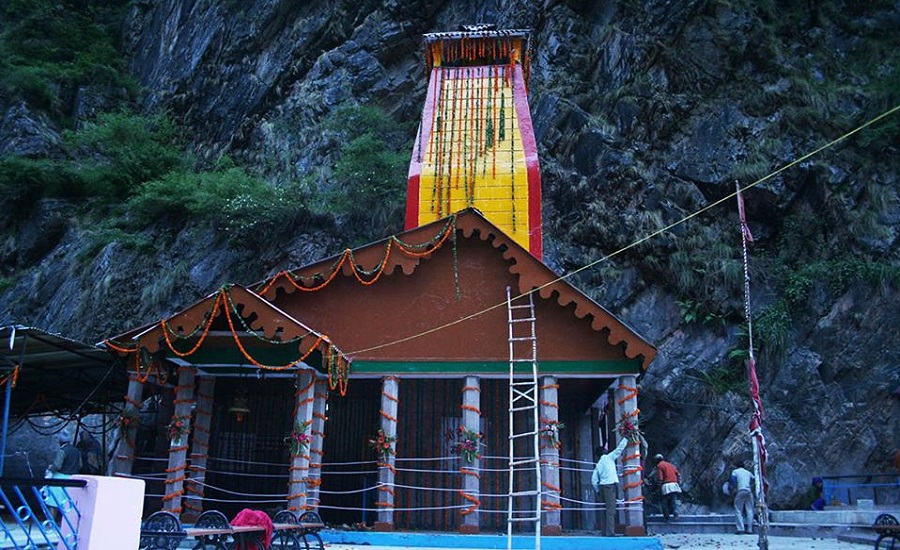
Spiritual Exercises: Various devotional practices are part of the Yamunotri pilgrimage, including taking a ritualistic bath in the hot springs, praying at the temple, and carrying out religious rituals. Additionally, pilgrims take part in aarti, a lamp-lit religious ceremony, and ask the temple priests for blessings. Pilgrims are able to connect with their inner selves and experience a sense of peace and tranquility thanks to the devotional practices, which create a sense of reverence and spirituality.
Revitalization and inner reflection: In addition to being a physical journey, the Yamunotri pilgrimage is also an opportunity for inner renewal and reflection. Away from the chaos of modern life, the tranquil and unspoiled Himalayan environment is ideal for contemplation, meditation, and self-reflection. During their pilgrimage, pilgrims frequently experience inner peace, clarity, and renewal, which can have a long-lasting impact on their spiritual journey and personal development.
Practical Information
It is essential to have useful information when making a pilgrimage to Yamunotri in order to ensure a safe and easy journey. Include the following important and useful information in your blog post:
The Best Time to Go: Yamunotri is usually only accessible from May to November because the region gets a lot of snow in the winter, making it hard to walk there and see the temple. When the weather is nice and the trekking routes are open, the summer months of May through June and the early autumn months of September through November are the best times to visit.
Route and difficulty of the hike: From Janki Chatti, the closest roadhead, there is a six-kilometer trek to Yamunotri for the pilgrimage. The trek has steep uphill sections and uneven terrain, making it moderately challenging. The physical challenges of the trek, which may necessitate stamina, endurance, and proper acclimatization to the high altitude, should be anticipated by pilgrims.
Fees for entry and permits: To visit the Yamunotri Temple, pilgrims must obtain a permit from the temple’s authorities, which can be obtained at Janki Chatti. In addition, there is a fee to enter the temple, which may differ for Indian and foreign visitors. Because pilgrims need to be aware of the necessary documentation and fees before embarking on their pilgrimage, it is essential to include information about the permits and entry fee in your blog post.
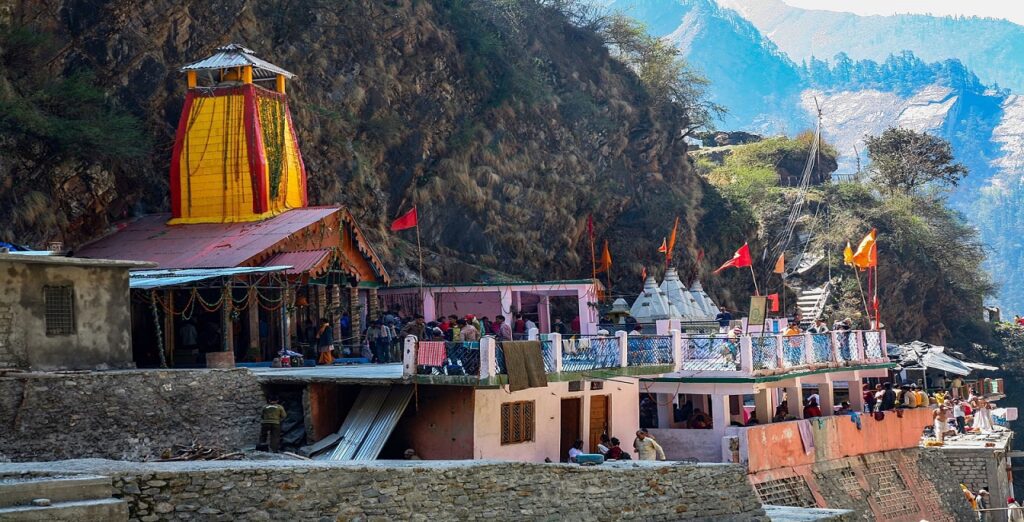
Food and Accommodation: There are restricted convenience choices accessible at Yamunotri, including visitor houses and dharamshalas (pioneer rest houses) worked by the sanctuary specialists and confidential merchants. Because the availability of lodging may be limited during the peak pilgrimage season, it is recommended that you make reservations in advance. Simple vegetarian meals are available at the guesthouses and local eateries in Yamunotri’s basic food options.
Wellbeing and Security: When making the pilgrimage to Yamunotri, pilgrims should be aware of the health and safety precautions that need to be taken. The rough terrain and high altitude can increase the likelihood of altitude sickness, injuries, and other health problems. Pilgrims should be physically fit, properly acclimate, and bring the medicines and first aid kits they need. In addition, it is essential to adhere to safety guidelines, trek along predetermined routes, and follow the recommendations of local authorities and guides.
Transportation and Network: Dehradun is the major town closest to Yamunotri and is well-connected by road, rail, and air. Pilgrims can take taxis or public transportation from Dehradun to Janki Chatti, the starting point for the Yamunotri trek. To assist pilgrims in planning their travel logistics, it is essential to include information in your blog post about transportation options, connectivity, and distances from major cities.
Conclusion
In conclusion, Yamunotri is a sacred pilgrimage site in the Indian state of Uttarakhand that is well-known for its spiritual aura, natural beauty, mythological and historical significance, and significance. Along with the hot springs and picturesque surroundings, the main draw is the Yamunotri Temple, which is dedicated to the goddess Yamuna. The pilgrimage to Yamunotri is a cherished experience for devotees and nature enthusiasts alike because it offers a singular combination of spirituality, adventure, and natural beauty.
It is essential to carefully plan your pilgrimage to Yamunotri, taking into account things like the best time to visit, the difficulty of the trekking route, permits and entry fees, lodging and food options, health and safety measures, and transportation and connectivity. A successful pilgrimage will be made possible by being well-prepared with all of the necessary information.
Yamunotri is more than just a religious destination; it is also a chance to connect with nature, take in the tranquility of the surroundings, and learn about the region’s cultural heritage. It is a place where one can find solace, rejuvenate the mind and spirit, and embark on an enriching and enlightening spiritual journey.
Thus, on the off chance that you are looking for a heavenly involvement with the lap of the Himalayas, Yamunotri could be the ideal journey objective for you. Prepare for a soul-stirring journey to Yamunotri, where spirituality and nature combine to create an experience that will last a lifetime, by planning your trip in advance.
FAQs
In Hindu mythology, what significance does Yamunotri hold?
Because it is believed to be the source of the Yamuna River, which is regarded as a sacred river in Hinduism, Yamunotri has a significant place in Hindu mythology. Yamuna is the sister of Yama, the god of death, and the daughter of the Sun God, according to Hindu mythology. Praying at the Yamunotri Temple and taking a dip in the holy Yamuna River is said to purify one of sins and bring blessings.
How do I reach Yamunotri?
Yamunotri is in India’s Uttarakhand’s Uttarkashi district. Dehradun, the major town closest, is well-connected by road, rail, and air. Janki Chatti, the starting point for the Yamunotri trek, can be reached from Dehradun by taxi or public transportation. The hike from Janki Chatti to Yamunotri is about 6 kilometers long and moderately challenging.
What is the best time to visit Yamunotri?
Because of the heavy snowfall during the winter, Yamunotri is generally only accessible from May to November. The summer months of May to June and the early autumn months of September to November, when the weather is pleasant and the trekking routes are open, are the best times to visit Yamunotri. Due to the possibility of flooding and landslides, it is best to stay away from the monsoon season (July through August).
At Yamunotri, which accommodations are available?
Guest houses and dharamshalas—pilgrim rest houses—operated by the temple authorities and private vendors make up the limited lodging options available in Yamunotri. Because the availability of lodging may be limited during the peak pilgrimage season, it is recommended that you make reservations in advance. The convenience choices are fundamental, with basic veggie lover feasts accessible at the visitor houses and neighborhood restaurants.
When visiting Yamunotri, what health and safety precautions should be taken?
The trek to Yamunotri, which is located at a high altitude, necessitates the necessary health and safety measures. Travelers ought to be in great shape, adapt appropriately, and convey essential prescriptions and emergency treatment packs. During the trek, it is essential to drink a lot of water and take breaks because altitude sickness can be a risk. For a safe pilgrimage, it’s important to follow the designated trekking routes, listen to local authorities and guides, and be aware of the weather.







